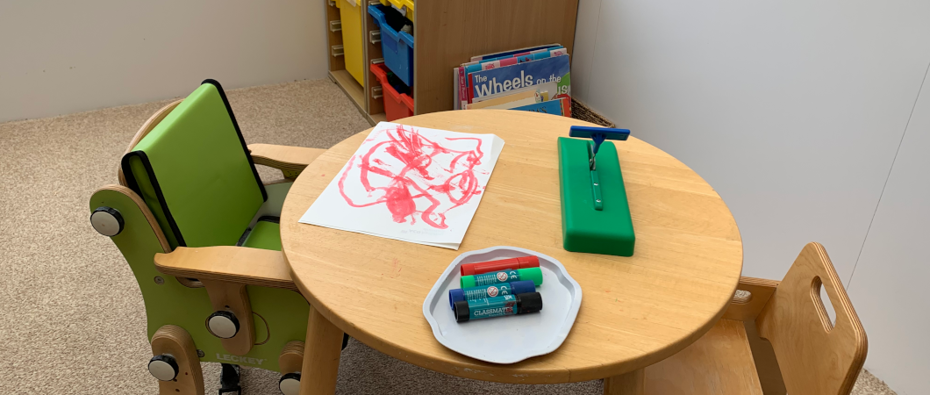Page Contents

Enabling Environments
- A whole setting approach to behaviour that is nurturing and therapeutic.
- Policies that identify evidenced strategies that support the behaviour of all children ensuring consistency.
- Practitioners seek to work in genuine partnership with children’s parents and carers to support children’s emotional, social, behaviour and mental health.
- Practitioners observe to identify what the child is communicating through their behaviour, identify underlying causes and triggers for behaviours and respond within the policy or individual plans.
- Practitioners are alert for possible underlying developmental needs and ensure these needs are addressed appropriately.
- Descriptions of the child’s behaviour when written are accurate, proportionate and evidenced.
- When appropriate a positive interaction plan is in place for individual children and understood and followed by all staff.
- When appropriate risk assessments are in place, up to date and followed consistently.
- Practitioners ensure the child’s developmental level is appropriately identified and staff expectations are in line with the child’s needs.
- Practitioners seek to understand children’s behaviour by exploring the reasons to effectively support them.
- Practitioners understand that children’s experiences shape their behaviours.
- Practitioners are aware of and responsive to children’s emotional state.
- Practitioners are aware of their own emotional needs and ensure that their responses to children’s behaviour are not related to their own needs.
- Children’s emotional and developmental needs are responded to in a timely and appropriate manner.
- Quiet cosy area for children access to relax, regulate, and get away from the busyness of a group.
- Visual timetable (alongside consistent routines and preparation for a change).
- Use traffic lights or similar for different noise levels.
- Social and emotional situations explored through appropriate stories and supported play.
- Acknowledging child’s emotions when they are expressing this through their expressions and behaviour.
- Practitioners model behaviours they want to see.
- Any rules are simple and positively phrased.
- There is a clear focus on children’s strengths and interests.
- Practitioners understand the schema and schematic play as a positive play experience for children.
- Be clear about whether you are giving a choice or an instruction.
- Give limited choices.
- Reduced and predictable language (one instruction).
- Say what you want rather than what you do not want.
- Ask what happened rather than why something happened, in line with children’s developmental understanding.
- Summarise a situation that has occurred without placing blame in simple terms appropriate to the child’s needs.
- Offer to help the child when they are expressing their emotions through actions and behaviours.
- Acknowledge desired behaviour.
- Celebrating achievements in a meaningful manner (appropriate to the child’s needs and ensuring the child is comfortable with this).
- Provide sensitive support around key transitions (visual timetable, first then board, first language, social stories, sand timer, count down)
- Individual preparation for change should be offered if needed.
- Personalised social stories can be used to support situations that challenge the child. E.g., transitions or sharing etc.
- Planned time to engage with the child at regular intervals throughout the day. For some children, it can be helpful for them to see that they will have some time with a trusted adult. E.g., five minutes of 1:1 time doing a favourite activity before a transition or at the beginning of the session.
- Provide an agreed calm area that is appropriate to the needs of the group and or a specifically identified space for an individual child and provide sensitive support to access this.
- Support the child to regulate. E.g., calm down box or creating a quiet
- Plan not to acknowledge minor behaviours focussing instead on connecting and redirecting behaviour.
- Provide an appropriate alternative to inappropriate behaviours. This may require practitioners to explore what is motivating the behaviour or identify the unmet need or skill to be developed. E.g., providing a throwing activity if the child repeatedly throws resources or supporting a child to make positive connections with peers when they hit to engage the child.
- Opportunities to develop skills that are impacting access and behaviour e.g., social skills or turn-taking.
- Staff identify whether there may be a sensory element to behaviour and address this in supporting the child. E.g., sensory diet, sensory circuits, fidget toys or ear defenders.
- Consider the impact of the environment on the child’s behaviour and make appropriate changes and adaptions to support the child’s access to the setting, this is particularly likely to be related to sensory needs. E.g., turning off background noise if a child is overstimulated by noise, providing a small number of bricks on a tray when a child is overwhelmed by a tabletop full of bricks and communicates this by swiping the tabletop.
- STEPs trained staff use STEPS resources to inform strategies for an individual child.
Managers may need to be aware of the effects of supporting children with social, emotional, and mental health concerns on the well-being of practitioners. Supervision, informal chats, and observation should be utilised to ensure that staff are well-placed to support children and can access appropriate support should they need it.

